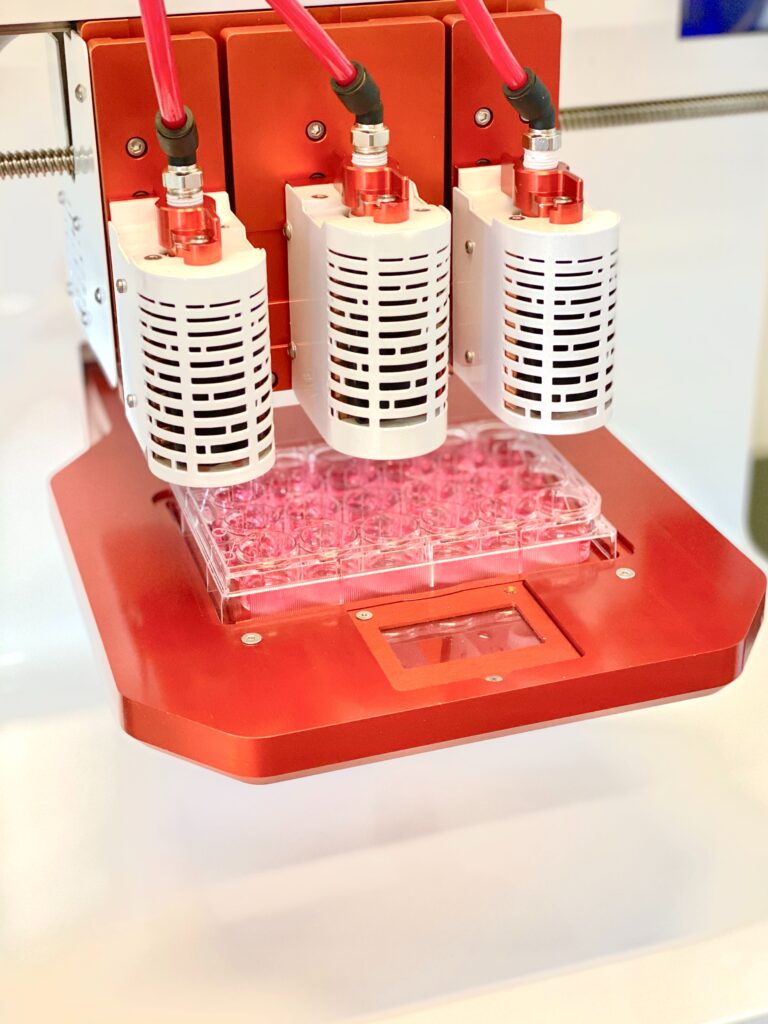3D bioprinting presents great potential as a versatile technology that is transforming animal-free research models. The success it has demonstrated in effectively recapitulating human biological systems prompted pioneers in the biomedical industry to be early adopters of the technology. As the platform expands its reach into drug discovery, regenerative medicine, translational medicine, and preclinical therapeutics research, the promises of 3D bioprinting speaks for itself.
With the most recent update on the FDA Modernization Act, which removes the requirement for animal testing before drugs reach the market, we are seeing more efforts in developing animal-free preclinical models and systems. The many challenges in preclinical research are identifying relevant human models and samples to demonstrate statistically significant data; 3D bioprinted models and organs-on-chips present innovative solutions to bridge the gap and accelerate advances in human-based in vitro models. These technologies enable the creation of physiologically relevant 3D constructs composed of human cells and tissue-based materials that recapitulate human organ, tissue, and disease structure and function.
But where do we start? Many customers doing biomedical research have expressed the desire to adopt 3D bioprinting into their project pipelines but simply do not know where to start. As a trained scientist, my many years of experience working at the bench in immunology labs have included developing animal models and spending countless hours in the animal and flow cytometer rooms. In a world where your everyday tasks are divided into protocols and assays, it is easy to get stuck in a rut, in the tried and tested lab-established protocol that got your Principal Investigator (PI) their first Nature publication that since then has been passed down postdoc to postdoc.
To move the needle, we need more than hand-me-down projects, and while many scientists have approached us expressing their interest in bioprinting, the barrier to entry remains high for such a community. What Allevi has learned is that the bioprinting business is not just commercializing bioprinters, it involves an entire ecosystem around bioprinting technology, comprising bioprinters, bioinks and biomaterials, bioprinting services, and customized solutions. This streamlined bioprinting solution offers full-service support for novices to the technology and allows our current customers to quickly adopt and integrate the system into their research protocols.
It is not lost on researchers that the time, money, and effort spent on animal models and collecting quality human samples that yielded good data could be invested in learning novel systems that set their research apart from the mainstream labs. The true value 3D bioprinting brings is a highly sustainable and adaptable technique and technology that once familiarized sets researchers up for long-term success. However, to develop a repertoire of 3D bioprinting protocols that spans different disease models, organs, cell types, and biomaterials, scientists will need a team of materials scientists and biomedical engineers to design, troubleshoot and optimize said protocols. The toolbox does not expand itself by simply having a bioprinter in the lab. This is a journey that requires a partner for success along the way. The research labs that have figured out how to blend their curiosity with the expertise of an external partner are not only maximizing their investment in the bioprinter, they are able to develop unique models that are enabling breakthroughs in their field.
3D Systems is participating at Additive Manufacturing Strategies, taking place in New York City from February 7-9, 2023. Dr. Hanchih (Han) Wu, Commercial Director of Bioprinting at Allevi, a 3D Systems company, will be taking part in Session 1, Panel 1: Bioprinting: New Technology and Commercialization on February 7. Register for your ticket to attend here.
Subscribe to Our Email Newsletter
Stay up-to-date on all the latest news from the 3D printing industry and receive information and offers from third party vendors.
You May Also Like
US Army Corps of Engineers Taps Lincoln Electric & Eaton for Largest 3D Printed US Civil Works Part
The Soo Locks sit on the US-Canadian border, enabling maritime travel between Lake Superior and Lake Huron, from which ships can reach the rest of the Great Lakes. Crafts carrying...
Construction 3D Printing CEO Reflects on Being Female in Construction
Natalie Wadley, CEO of ChangeMaker3D, could hear the words of her daughter sitting next to her resounding in her head. “Mum, MUM, you’ve won!” Wadley had just won the prestigious...
Blue Laser-powered M600 3D Printer Launched by Meltio
Founded in 2019 as a joint venture between Additec and Sicnova, metal 3D printer OEM Meltio develops and manufactures high-performance and easy-to-use metal 3D printing solutions that use its patented wire-laser metal...
3D Printed Storage Tanks Cut Material Costs by 25%
In a previous article, “Concrete Dreams: Let’s Print Money, Not Houses,” we discussed how the spotlight on 3D printing homes might be misplaced. Bollards, pedestrian bridges, and concrete tanks could...































